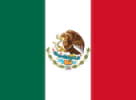activist, art, artist, artistic, auction, blog, cafe blog, cafes, calla lilies, chiapas coffee, coffee, colleagues, colonial architecture, conquest, cubism, cup of coffee, Diego, Diego Rivera, Diego’s paintings, esoteric icon, eternal love, exhibition, France, freedom, frida, frida kahlo, gallery, Guanajuato, historical, History of Mexico, icon, iconic, icons of Mexican culture, impressionism, independence, indigenous, indigenous people, influential artists, influential Mexican painters., Kahlo, Kahlo’s affairs, latin american, Latin American artwork, Latin American woman, life, Louvre, love, lovers, madrid, maya, Maya coffee, mayan, Mayan mural tradition, mestizo, mexican, Mexican Arabica Coffee, Mexican Art, mexican coffee, mexican heritage, mexican painter, mexican revolution, mexico, mexico real cafe, Mexico Real’s Cafe blog, Mexico’s history, Mexico’s independence, mexique, Montparnasse, muralism, murals, museums, New York, oaxaca coffee, paint, painters, paintings, Paris, passion, personality, Pluma Mountain, political, post, Pre-Hispanic Civilization, prehispanic, realism, rivera, Rivera’s paintings, San Francisco, single origin, Spain, spanish conquest, the best of mexico, The Day of the Dead, The Maize Festival, the USA, tradition, u.s., unesco, united states, World Heritage Site, world history





1 Comment. Leave new
[…] was married to Diego Rivera who is one of the most influential Mexican painters whose frescoes started the mural movement in […]